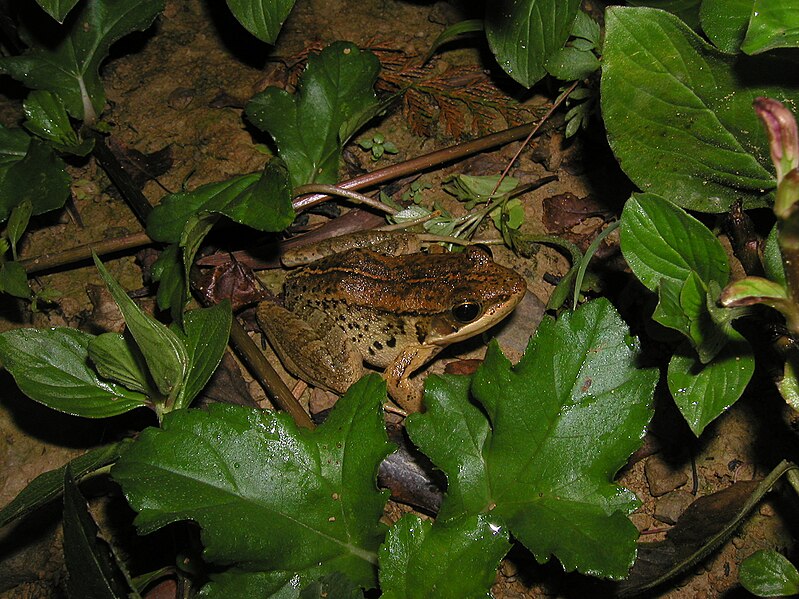
“Behavioral enrichment” – allowing captive animals a wider choice of behaviors in which to engage – is all the rage in zoos, especially for mammals. Reptiles and amphibians also benefit greatly when afforded the chance to act in a more “natural” manner. While they do not seem to engage in “play” (although turtle owners may question this!), most will engage in activities that are extensions of natural behaviors, particularly hunting.
Poison frogs respond quickly to novel situations and are among the best amphibian candidates for enrichment experiments. I enjoy watching them “figure out” new things. One technique I use is to place crickets into a container perforated with tiny holes – the frogs soon learn to associate the container with food, and will gather about it, watching the holes for escaping insects. On non-feeding days, you may still notice that the frogs will pause occasionally to peer at the feeder, apparently in anticipation of a meal.
Establishing a colony of springtails (tiny, wingless insects that may be collected below leaf litter) in the terrarium’s substrate will also provide your frogs with “naturalistic” hunting opportunities. Springtails will thrive on decaying moss and the frogs’ waste products, and usually do quite well and provide valuable nutrients to your pets (springtails can also be given a bit of tropical fish flakes on occasion). It is great fun to watch poison frogs scrutinize every inch of the terrarium and to stalk their prey, and they surely benefit from the increased activity levels.
Information about behavioral enrichment for reptiles and amphibians at the National Zoo is posted at:
http://nationalzoo.si.edu/Animals/ReptilesAmphibians/enrichment/
 A recent study has challenged what we know, or thought we knew, about frog communication. Researchers were astonished to discover that the calls of male Emei Music Frogs, (Babina daunchina) inform females of such details as the length and width of the singer’s burrow.
A recent study has challenged what we know, or thought we knew, about frog communication. Researchers were astonished to discover that the calls of male Emei Music Frogs, (Babina daunchina) inform females of such details as the length and width of the singer’s burrow. That Reptile Blog – Reptile, Amphibian and Exotic Pet Care and Information
That Reptile Blog – Reptile, Amphibian and Exotic Pet Care and Information




